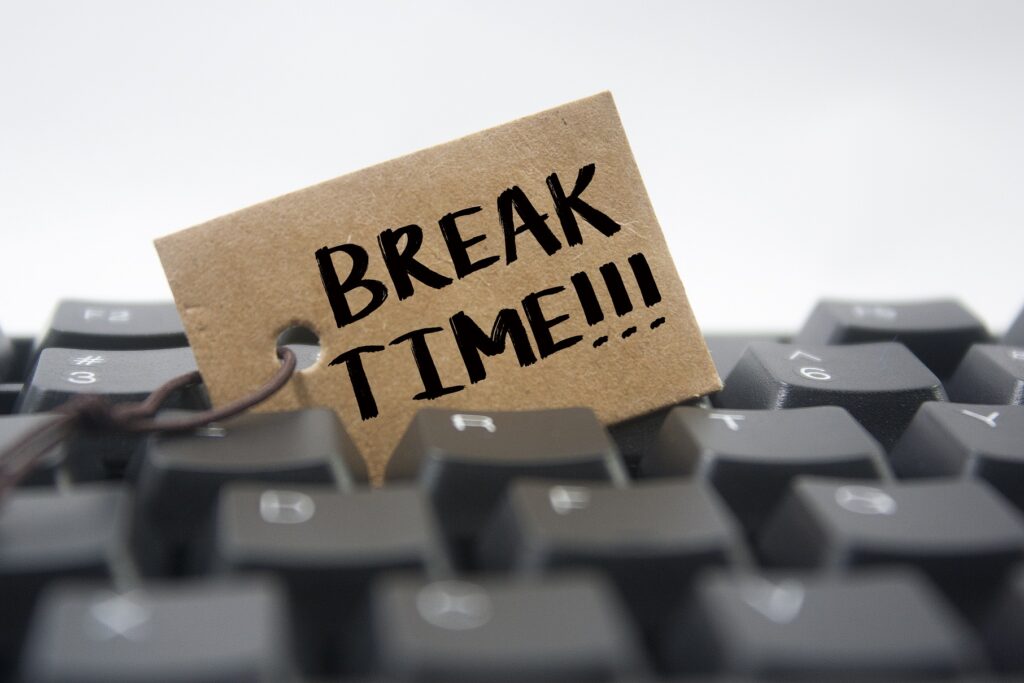Short Breaks Exposed: Why Your Office Routine Is Killing Your Productivity

You power through your workday, skipping breaks to meet deadlines. But what if this “hustle culture” is actually backfiring? The truth is, short breaks aren’t time-wasters—they’re productivity boosters. Science backs this up, showing that stepping away from your desk for even a few minutes can significantly improve focus, creativity, and well-being.
The Science Behind Short Breaks and Productivity
Studies show that working for long periods without rest leads to cognitive fatigue and declining efficiency. Research from the University of Illinois found that taking brief mental breaks can improve concentration by up to 16%. The Pomodoro Technique, which encourages 25-minute work sessions followed by short breaks, is widely praised for maintaining high productivity levels.
Benefits of Short Breaks in the Workplace
Taking breaks doesn’t mean slacking off. In fact, regular short breaks offer several benefits:
✅ Boosts Focus and Energy – Micro-breaks help reset the brain and combat mental fatigue.
✅ Reduces Stress and Burnout – A five-minute break can lower stress levels and improve overall job satisfaction.
✅ Enhances Creativity – Stepping away from a task allows new ideas to surface.
✅ Promotes Physical Health – Short breaks encourage movement, reducing the risks of prolonged sitting.
(Insert image of an employee stretching at their desk with a relaxed expression)
How Often Should You Take Breaks?
Experts recommend taking a 5-10 minute break every 60-90 minutes to maintain peak performance. The Pomodoro method suggests 25-minute work sprints with 5-minute breaks to optimize efficiency.
| Break Frequency | Break Duration | Recommended Activities |
| Every 60-90 minutes | 5-10 minutes | Stretching, deep breathing, quick walk |
| Pomodoro Technique | 5 minutes | Hydration, light stretching, meditation |
| Lunch break | 30-60 minutes | Full meal, outdoor walk, socializing |
Best Practices for Incorporating Short Breaks at Work
Want to make short breaks a habit? Here’s how:
- Schedule Your Breaks – Set reminders to ensure you take time away from your desk.
- Move Around – Walk around the office or do simple stretches to stay active.
- Engage in Relaxing Activities – Listen to music, read, or meditate to reset your mind.
- Create a Break-Friendly Culture – Employers should encourage breaks and provide dedicated relaxation spaces.
(Insert image of a cozy office lounge area designed for employee relaxation)
Can Short Breaks Improve Workplace Productivity?
Absolutely! Companies that promote regular breaks see increased employee satisfaction and efficiency. A study by the Draugiem Group found that the most productive workers took 17-minute breaks every 52 minutes of work. Businesses can measure break effectiveness through employee feedback and productivity tracking tools.
Final Thoughts: Break to Work Better
Short breaks are a game-changer for workplace productivity and well-being. If you’re serious about maximizing efficiency, start embracing breaks—not avoiding them. Need help improving employee wellness? Book a demo with Mixcare and discover customizable employee benefits with minimal HR setup.
